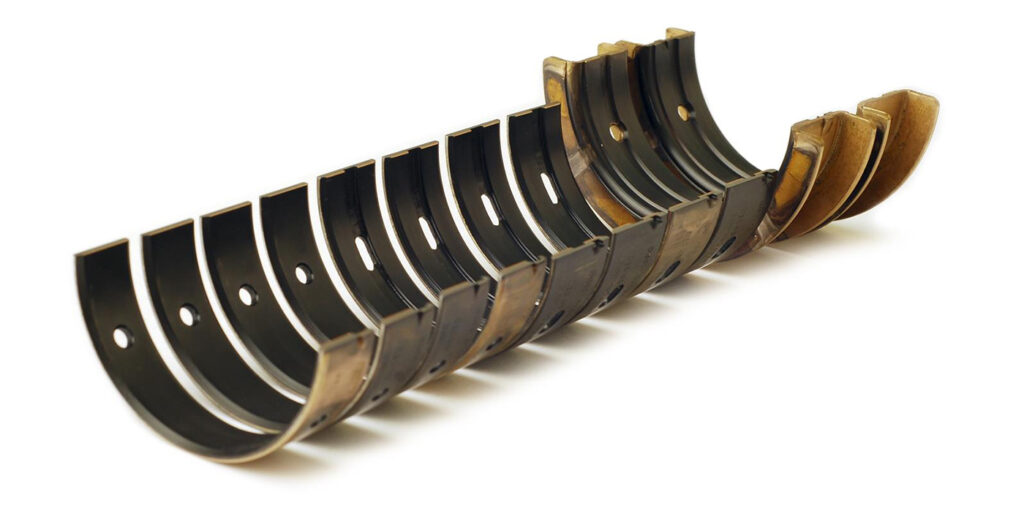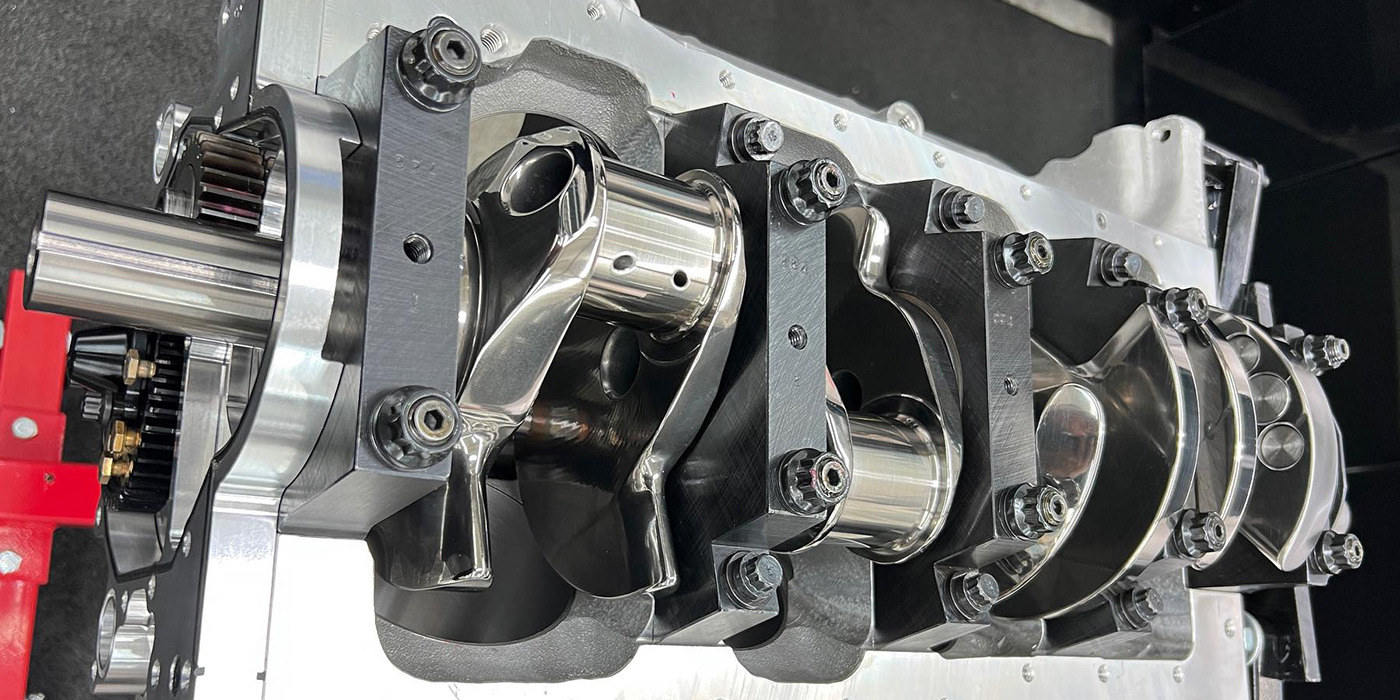When you’ve got a multitude of heavy, fast-moving parts working in tandem to produce insane amounts of horsepower, there’s going to be quite a bit of stress happening inside that engine. One half of the pie is doing everything you can to create a sufficient amount of power. The other half is making sure that power is supported and produced reliably. Engine bearings are a key component in this regard.
The job of engine bearings is to prevent unsavory metal-to-metal contact and protect other parts and pieces from wear during regular engine operation. Bearings must withstand extreme abuse and work to improve the durability of the engine as a whole.
That being said, there are a lot of considerations an engine builder must make when deciding on the right set of engine bearings for their particular applications – fatigue strength, balance of the reciprocating assembly, lubrication, rpm limits, heat, embeddability, and corrosion resistance – to name a few.
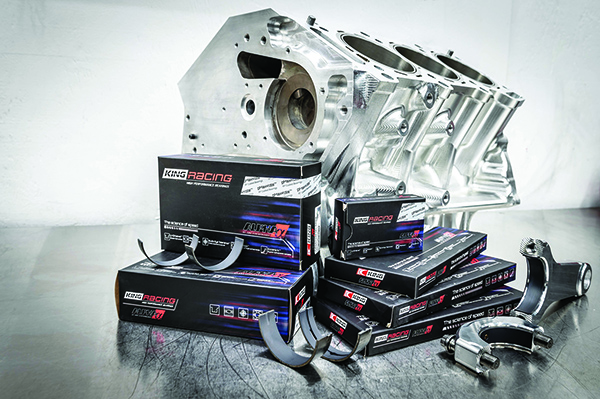
With performance racing applications and high-horsepower engine building constantly pushing the envelope, now more than ever, new problems arise that need to be adapted to. For example, computers and tuners are now playing a much more significant role in widening engine timing curves, injection pulse and turbo boost. There is nothing inherently wrong with this, but over boosting engines and programming them to run at the rev limit for a consistent time can eventually cause crankshaft torsional vibration (crank flex). This then poses a problem for the bearings.
Nowadays, a bearing (in a performance setting) must be both hard and soft. Retaining geometry is of utmost importance, but it also must be malleable and able to adjust for stress and flexing. The most important part of minimizing the odds of a seizure is selecting the correct bearing material.
“For modern engines there are two basic families of bearing materials – copper based (known as tri-metals) and aluminum based (known as bi-metals),” says Mike Scott of ACL Bearing Company. “The fundamental requirement of bearing alloys is toughness. It’s the ability to support high loads balanced with soft, anti-seizure properties that allow the bearing to adapt to and absorb punishing operating conditions.”
Tri-metals are strong, copper and lead-based alloy linings with a thin overlay of electroplated babbitt. These combine high strength with the soft and forgiving properties of the overlay. Adjusting the relative thicknesses of the layers and their metallurgy allows a degree of optimization so that for moderate load applications, good strength can be provided along with excellent, anti-seizure proper-ties providing a tough solution for standard rebuilds, particularly where OE standards of engineer-ing and cleanliness cannot be guaranteed.
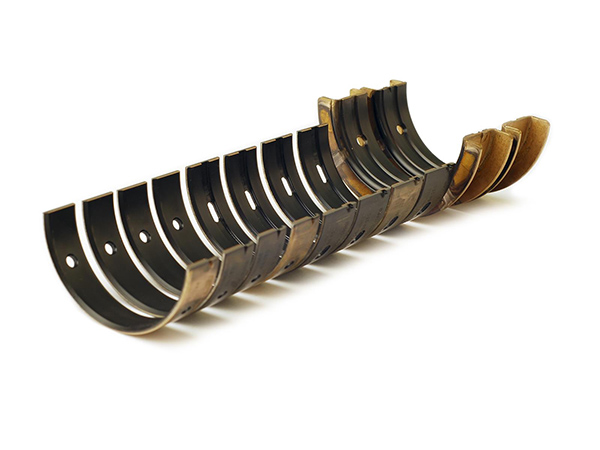
For performance applications, a very high-strength lining layer can be matched with a tough overlay to support extreme loads with interaction between shaft and bearing.
Bi-metals are medium-strength aluminium-tin-based alloy linings, which have all around capabilities such that no overlay is required. However, balancing the strength and anti-seizure properties in a single alloy is invariably a compromise. Bi-metals that are strong tend to have significantly reduced anti-seizure properties and vice-versa. This makes them suited for applications where operating conditions are moderate and predictable. Additionally, these materials also have excellent durability. These reasons make them strongly favoured by OEMs.
Obviously, tri-metals are the go-to for anything performance related due to their increased anti-seizure capabilities. This being said, there are a wide array of different options for builders to choose from when it comes to selecting the appropriate bearings. Many of them have added coatings, a trend that’s only grown over the past few years.
In extreme performance applications, controlling clearances so that there is complete separation of bearing and crankshaft is basically impossible. High load and high speeds mean high energy contact, which in turn causes power loss and overheating. Today, bearings are engineered so well that low-friction contact is sustainable, but coatings can further reduce friction levels and power loss.
ACL manufactures their tri-metal bearings with a 0.00025”-0.00030” Calico coating that provides intermittent dry lubrication. CT-1 coatings reduce friction and drag and increase the load carrying capacity. Under normal conditions, performance bearing overlays withstand around 12,000 psi. CT-1 coated bearings increase this load capacity to 180,000 psi. Coatings are also beginning to be used on bi-metal bearings found in OE stop/start engines.
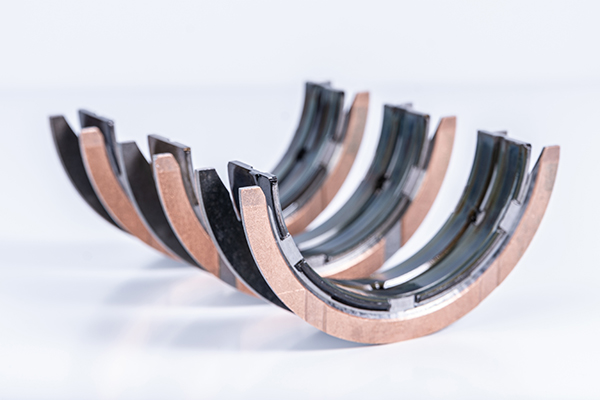
“King is developing a bi-metal coated lead-free bearing (PL) to replace many of the tri-metal (CP) bearings that contain lead,” says Ron Sledge of King Engine Bearings. “This is in response to many new OE engines that are coming out with coated bi-metal bearings used in stop/start engines. The different types of coatings provide anti-friction properties to the bearing surface, preventing bearing damage during the possible loss of oil pressure.
King is also one of few companies offering lead-free tri-metal bearings, a recent release of theirs.
“Engine bearings have to keep up with the higher loads that come with cylinder head development and big turbos,” Sledge says. “King has recently released a new silver matrix overlay tri-metal bearing available in uncoated (SV) and coated (GPC) variations. These materials have an advantage of 30% more fatigue strength over King’s mainstay (XP, XPC) tri-metal bearings. Applications will include diesel performance, sprint cars and high-horsepower OE engines.”
While lead-free engine bearings (and other lead-free metal components) will likely gain more traction soon due to environmental regulations and legislation, lead has many desirable properties when it comes to bearing material. One of those being that lead is “lipophilic” – it has an affinity for some types of oils – lowering the surface tension and making the bearing surface more “wettable.”
This makes lead a good addition in high-performance tri-metal bearing configurations. When lead alone isn’t enough, the highest of high-performing engines tend to feature lead-indium bearings. A normal tri-metal bearing is comprised of an overlay made of copper, tin, lead, a bronze substrate (copper/lead), a steel backing, and a thin nickel barrier to keep the tin from chemically migrating into the substrate. When indium comes into play, both the bearing’s strength and lifespan is affected.
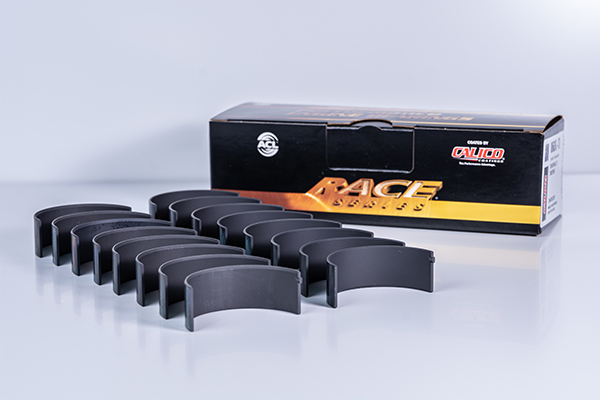
“Our H-bearings are a copper/tin/lead substrate and are 20-30% stronger,” says Dan Begle of MAHLE. “The H is a harder surface and designed to get a lot of street miles while staying rigid, so they’re good for someone who might do bracket racing and doesn’t pull their pan off until the end of the season.
“Our V-bearings are something you might see an NHRA racer using where the longevity of the bearing isn’t as important since they’re removing the oil pan frequently to inspect bearings. These bearings are made of lead-indium and are considerably softer and more pliable to allow movement of the overlay. When you have a lot of crank flex going on, that movement is very helpful while still maintaining its shape.”
Ultimately, it’s important for engine builders to consult with a bearing manufacturer before jumping the gun on engine bearings. While they might look like one of the simplest parts of a performance engine, taking time to research the best possible application assures a healthier engine and fewer possibilities of failures. EB

